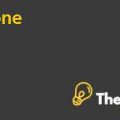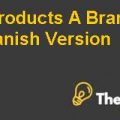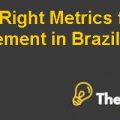
Introduction:
“Hansson Pvt. Label Inc.” (HANSSON) is a well known producer of personal care products, —soap, shampoo, mouthwash, shaving cream, sunscreen, and the like—all sold under the brand label of one or another of Hansson’s retail partners, which included supermarkets, drug stores, and mass merchants. Hansson is in operation since 1992 and in early 2008, HANSSON is evaluating an expansion plan of its manufacturing facility. Being a renowned private company, with 15 years of operational history, HANSSON is working almost at its full capacity and new order or commitment would require investment in expanding its manufacturing facility.
Scope:
- HANSSON’s business operations, capital planning strategy and past performance.
- Decision that is facing Tucker Hansson.
- Determine and analyze expansion’s Cash flow, NPV, IRR and Sensitivity analysis.
- Qualitative analysis / strategic and risk profile analysis. Assumptions and limitations.
- Recommendation with regards to the expansion.
Analysis:
Let us consider and analyze the above mentioned points. Also refer to the Excel Sheet for detailed calculations;
HANSSON’s business operations, capital planning strategy and past performance:
HANSSON has been in business since 1992 and the 15 years of operation has led it to the optimum position of its operations where it is operating near the full manufacturing capacity.
In order to meet any substantial new demand / order, it would need to expand its manufacturing facility and for this it would need to make substantial investments to accommodate the increased demand, without cannibalizing a significant portion of it’s existing business.
The financial performance of its last five years history can be observed from the following graph, for the year 2003 to 2007, which shows that HANSSON is effectively achieving sales growth throughout every year. EBITDA and Net income had declined slightly in 2005, but it managed to improve in 2006 and 2007 substantially such that it even crossed the history of previous three years.
Decision that is facing Tucker Hansson:
One of HANSSON’s largest retail customer has approached with an offer to significantly increase its share of private label manufacturing from HANSSON. Given that HPL was already operating near full capacity, it would need to expand its manufacturing facility in order to accommodate this important customer without losing its existing business.
However, the issue is that the expansion would require a substantial investment of $50 million, which requires HANSSON to undertake debt as well, while the customer is ready to commit only on a three-year contract, plus the client wants a commitment from Hansson within a period of 30 days, in which Hansson has to analyze and decide.
Although this investment commitment is a risky one, it is equally important that the prospects of growth and value creation are there as there are numerous examples of manufacturers, both in private label and branded businesses, who had risked their future by locking in a strong relationship with a huge, powerful retailer and many had availed big payout
Determine and analyze expansion’s Cash flow, NPV, IRR:
Detailed calculation have been done in the excel template which shows calculation for;
1. Sales
2. Depreciation Expense
3. Ongoing Maintenance and Repair
4. Cost of Goods Sold
5. Gross Profit
6. Selling Cost
7. General and Administrative Cost
8. Net Operating Profit Before Tax
9. Income Tax Expense
10. Net Income
11. Investment in Working Capital
Item 1 to 10 were calculated using the simple data for projections, available in exhibit 5.
Net changes in working capital (WC) for each of the given year is calculated from the ratios of Days Sales Outstanding, Days Sales Inventory and Days Payable Outstanding, which provide the figures for accounts receivable [Days Sales Outstanding Ratio x ( sales / 360)], inventory [Days Sales Inventory Ratio x ( sales / 360)] and accounts payable [Days Payables Outstanding Ratio x ( Costs excluding depreciation / 360)]. Using these, working capital is determined by;
Working Capital = A/c rec + Inventory - A/c Pay & accrued expenses.
This is just a sample partial case solution. Please place the order on the website to order your own originally done case solution.













